137. Audubon at Bent of the River
Get Bent
Southbury (Google Maps Location)
August 14, 2009
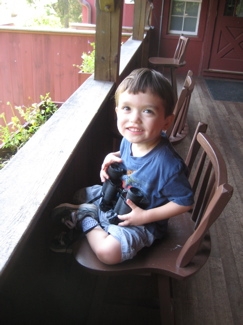 Before Damian transitioned to a new in-town daycare (and before I started my new job), I decided to spend a couple weeks with him in order to save some money – and if you know how much daycare costs, we’re actually talking a lot of money saved. And so, after picking him up from summer school, we hit the highway west in search of adventure at another of Connecticut’s Audubon Society Centers – this time, all the way out in Southbury.
Before Damian transitioned to a new in-town daycare (and before I started my new job), I decided to spend a couple weeks with him in order to save some money – and if you know how much daycare costs, we’re actually talking a lot of money saved. And so, after picking him up from summer school, we hit the highway west in search of adventure at another of Connecticut’s Audubon Society Centers – this time, all the way out in Southbury.
I’d been to a few Audubon joints already in Glastonbury, Pomfret and Fairfield and had come to learn that while each all have very similar displays and missions, they are unique in many ways. It goes without saying that the most unique thing about the Southbury center is its name: Bent of the River. Before researching the property, I had my own guesses at where the name came from. 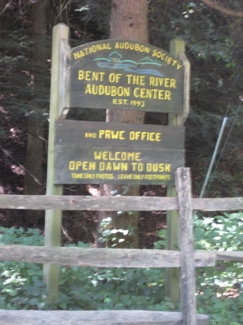 The property is situated south of a very pronounced bend of the Pomperaug River on its way to a bendy portion of the larger Housatonic River, the confluence of which is just below the sanctuary. Even Google Maps has trouble with the place name – as of today, it shows as “Bend of the River.”
The property is situated south of a very pronounced bend of the Pomperaug River on its way to a bendy portion of the larger Housatonic River, the confluence of which is just below the sanctuary. Even Google Maps has trouble with the place name – as of today, it shows as “Bend of the River.”
Which certainly makes more sense… After all, there’s a Jimmy Stewart western titled “Bend of the River,” and of course V.S. Naipul’s classic book of that same name. (Aw man, I should have read that one this year on my quest to read the Top 100 books of the 20th century.) BerkshireHiking.com, usually a great resource for outdoors info, even poses the question, “The land borders the Pomperaug River as it bends and turns, thus the name Bent of the River?”
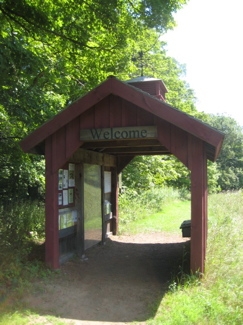 Obviously that (or the bend in the larger Housatonic) is the reason, but why “Bent” and not “Bend?” Am I the only one who is curious about this? Just a little bit? Alas, I have the answer. The last property owners who bequeathed it to the Audubon Society, the Clarks (more on them below), had named their estate “Bent of the River” after a 1702 deed where the English settlers bought the land north of the Bent. A noted landmark, “Ye Bent of Ye River,” was cited in the somewhat archaic language of the time. This “Bent” is the sharp turn in the Pomperaug River just east of the Center’s main entry on East Flat Hill Road. The village of South Britain (town of Southbury) was originally called Bent of the River as well. In her instructions, Mrs. Clark requested the Audubon keep the unusual name.
Obviously that (or the bend in the larger Housatonic) is the reason, but why “Bent” and not “Bend?” Am I the only one who is curious about this? Just a little bit? Alas, I have the answer. The last property owners who bequeathed it to the Audubon Society, the Clarks (more on them below), had named their estate “Bent of the River” after a 1702 deed where the English settlers bought the land north of the Bent. A noted landmark, “Ye Bent of Ye River,” was cited in the somewhat archaic language of the time. This “Bent” is the sharp turn in the Pomperaug River just east of the Center’s main entry on East Flat Hill Road. The village of South Britain (town of Southbury) was originally called Bent of the River as well. In her instructions, Mrs. Clark requested the Audubon keep the unusual name.
I can sleep now. And better yet, I can get on with our visit…
We found the turnoff easily and parked in the dirt lot and I immediately knew I was in for a little workout. You see, in order to preserve the, um, Preserve, there are no roads on the grounds. While the walk to the center isn’t long, it also isn’t so fun carrying a 3 year old the whole way when it’s 85 degrees outside. I tried to get him to walk, but when Damian doesn’t want to walk, he simply doesn’t walk.
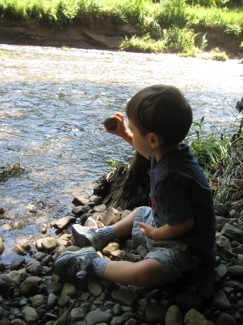 So, as I sweat and carry the boy down the trail along the Pomperaug River, let’s learn a bit about this place. The Audubon Center at Bent of the River lies on 660 acres in Southbury, Connecticut, near the historic village of South Britain. Visitors often call it one of the most beautiful places in Connecticut. It is both an inviting outdoor sanctuary where people can connect with nature on 15 miles of walking trails and an environmental education center where students, young and old, can find strong, enlightening programs.
So, as I sweat and carry the boy down the trail along the Pomperaug River, let’s learn a bit about this place. The Audubon Center at Bent of the River lies on 660 acres in Southbury, Connecticut, near the historic village of South Britain. Visitors often call it one of the most beautiful places in Connecticut. It is both an inviting outdoor sanctuary where people can connect with nature on 15 miles of walking trails and an environmental education center where students, young and old, can find strong, enlightening programs.
The Bent of the River is an evolving nature center. Donated to Audubon in 1993 by Althea Ward Clark, the Bent was held as a limited access nature sanctuary through 2000. Since that time, Audubon has opened the gates daily from dawn to dusk and introduced many public and school programs, particularly for middle and high school students. The Bent is envisioned as a place for environmental education, research, advocacy, collaboration, and land conservation; as a laboratory and showplace for habitat preservation and restoration practices; and finally as a sanctuary for nature and people.
 Well that’s cool. Not cool? Me lugging around an ornery kid. But alas, there’s a shady spot to take a break and partake in one of Damian’s favorite things in the world: Throwing rocks in a river. Ahhh, father and son, side by side in the middle of the woods in the middle of nowhere without a care in the world. Throw all the rocks you want, son. Throw until you can’t throw no mo’.
Well that’s cool. Not cool? Me lugging around an ornery kid. But alas, there’s a shady spot to take a break and partake in one of Damian’s favorite things in the world: Throwing rocks in a river. Ahhh, father and son, side by side in the middle of the woods in the middle of nowhere without a care in the world. Throw all the rocks you want, son. Throw until you can’t throw no mo’.
Once back on the trail, I couldn’t help but notice that this smallish sanctuary has a ton of trails. The Bent has about fifteen miles of hiking trails through meadows and woods. Some of these trails run through countryside that feels very remote and wild. They all seem well marked and you can download a trail map from their website – or just wend your way to the old barn to pick up a map.
For birders, the Bent presents excellent inland birding throughout the year. In season, Audubon WatchList birds such as prairie, blue-wing, and worm-eating warblers, woodcock, and wood thrush are relatively common in the shrubby meadows and interior forests. Over 175 avian species have been recorded here (We saw a big blue heron in the river on our way back out). Staff and volunteers have been doing extensive habitat conservation work, particularly in the early successional meadows.
Across a long bog bridge and then up a series of switchbacks, Damian and I finally made our way to the barn and the exhibits within. The place seemed deserted but the one lady we saw told us to go on in upstairs to the exhibit area. The building was old but charming and once we turned the lights on, the exhibit space was large and contained a bunch of random artifacts. Before we get to them, I’m sure you want to know how the Audubon Society came about getting this beautiful parcel of land.
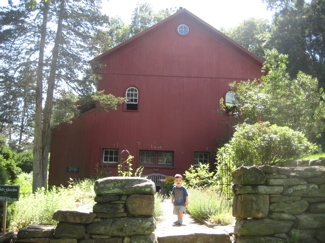 Audubon is only the third owner of the Bent of the River property since European settlement. Native Americans had lived in the area and elsewhere in New England for thousands of years. By the mid-eighteenth century, European diseases, such as smallpox and measles, had largely decimated the local tribe, the Pootatucks who had little resistance against these foreign pestilences.
Audubon is only the third owner of the Bent of the River property since European settlement. Native Americans had lived in the area and elsewhere in New England for thousands of years. By the mid-eighteenth century, European diseases, such as smallpox and measles, had largely decimated the local tribe, the Pootatucks who had little resistance against these foreign pestilences.
In 1753, Eleazar Mitchell bought the “south purchase” from the Pootatucks. This was the last remaining native land in Southbury. He built his homestead at what is now the corner of South Flat Hill and Brennan Roads. The property is currently owned by the Southbury Land Trust. The last Pootatuck sachem, Manquash, died in 1755 and the few remaining Pootatucks moved to Kent to join the Schatacokes. Eleazar Mitchell’s grandson, Amos, built the brick house, now called the Clark House. It is Federalist in style and has an estimated date of 1820-1840. Sometime, shortly after the Civil War, Amos Mitchell built the big Barn that now houses Center offices and small museum.
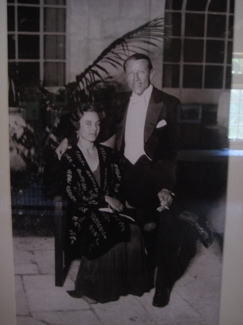 In 1933, the heirs of William E. Mitchell sold the Bent of the River farm to a young, wealthy couple, Althea and Howard Clark. The Clarks bought 350 acres including the brick house, the barn, and four farm-hand houses for $15,000. They then put $33,000 (probably about $1,000,000 today) into completely renovating the house. The Clarks kept horses, a few cows, and sheep. The buggies and sleighs on view in the barn exhibit area were driven by the Clarks around the land and elsewhere in Southbury. Mrs. Clark was involved with girl scouts and, as she grew older, increasingly concerned about land conservation. Mr. Clark, who was an author, died in 1987 and Mrs. Clark passed away in December 1992.
In 1933, the heirs of William E. Mitchell sold the Bent of the River farm to a young, wealthy couple, Althea and Howard Clark. The Clarks bought 350 acres including the brick house, the barn, and four farm-hand houses for $15,000. They then put $33,000 (probably about $1,000,000 today) into completely renovating the house. The Clarks kept horses, a few cows, and sheep. The buggies and sleighs on view in the barn exhibit area were driven by the Clarks around the land and elsewhere in Southbury. Mrs. Clark was involved with girl scouts and, as she grew older, increasingly concerned about land conservation. Mr. Clark, who was an author, died in 1987 and Mrs. Clark passed away in December 1992.
Mrs. Clark bequeathed their land to National Audubon and gave the Society an endowment to be used for the Bent’s maintenance and for education programs throughout National Audubon. She also left explicit instructions about maintenance of the land, such as preserving it for native flora and fauna and having no trail blazes or interpretive signs. She wanted the Bent to be kept in a state of “mild wildness.”
While commendable, I can report that it’s a little bit frustrating at the same time; with so many trails and minimal signage, it’s easy to get confused. I didn’t, of course, but my internal GPS is insanely strong.
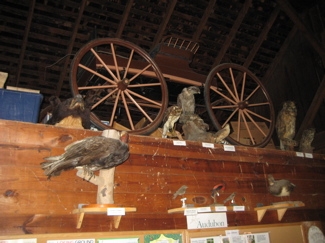 Audubon maintained the property as a gated, limited access sanctuary until 2000. At that time, Audubon began the transition toward making the Bent a complete nature center. Which was the reason we were here.
Audubon maintained the property as a gated, limited access sanctuary until 2000. At that time, Audubon began the transition toward making the Bent a complete nature center. Which was the reason we were here.
As the museum portion of this whole shebang is in its infancy, I can’t really fault them for being a bit small and scattershot. They have a decent collection of stuffed animals – not just birds – but the exhibit space is rather huge and therefore appears to be a bit empty. Of course, the Society is more intent on presenting a great outdoor area and they have certainly succeeded in that regard.
Aside from the animals placed all around the room, there is a small collection of antique farm implements as well as a few natural history and human history displays. My favorite farm tools have to be these:
Personally, I hate walking behind hoes and like to get away from them as quickly as possible.
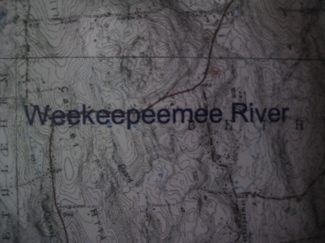 There are some old maps including one with the Weekeepeemee River featured prominently. The river still exists, as does the name, but I had never heard of it before. There’s also a Weekeepeemee Road over in Bethlehem, which was in the news just yesterday because a tree fell on top of a USPS driver and killed her. I won’t bother linking the Courant article because it will be gone in a week or two. But I mention it for its sheer horribleness. “How did your friend die?” Oh, she was delivering mail on Weekeepeemee Road and a tree fell over and killed her. Awful.
There are some old maps including one with the Weekeepeemee River featured prominently. The river still exists, as does the name, but I had never heard of it before. There’s also a Weekeepeemee Road over in Bethlehem, which was in the news just yesterday because a tree fell on top of a USPS driver and killed her. I won’t bother linking the Courant article because it will be gone in a week or two. But I mention it for its sheer horribleness. “How did your friend die?” Oh, she was delivering mail on Weekeepeemee Road and a tree fell over and killed her. Awful.
At the far end of the room is a display case of Native American arrowheads as well as some other tools. Some of these artifacts, which were found near the Bent, are estimated at 3,000 years old. That’s old. Not quite as old, but interesting all the same is the old sleigh perched high up on a half wall. This was owned by the Clarks when they lived here and it’s pretty cool that it appears to still be in very workable condition.
The Clarks were an interesting couple. Obviously wealthy and talented, they were reclusive in the sense that they lived in the middle of what was assuredly nowhere in Connecticut at the time. Howard Clark was a novelist and Althea a photographer of some repute. What perfect professions for two people surrounded by beautiful woods and streams… Sigh. My wife, Hoang, took a few photography courses and I write this blog so maybe we too can live like the Clarks someday. And if we do, I promise to will my 600 acres to the Audubon Society. And bring about world peace.
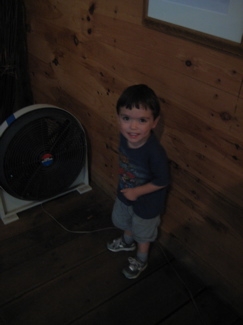 Damian’s favorite part of the museum were the whirring floor fans (of course) but I was able to lure him away back outside to the observation deck. Man, I want an observation deck at my house. This place was great; they supplied binoculars for us to peer down over the meadow and bird houses. Unfortunately, the haze of the hot summer day limited the distance we could see, but it was still fun. Damian seemed to enjoy the fact that his vision was so greatly improved by the binoculars.
Damian’s favorite part of the museum were the whirring floor fans (of course) but I was able to lure him away back outside to the observation deck. Man, I want an observation deck at my house. This place was great; they supplied binoculars for us to peer down over the meadow and bird houses. Unfortunately, the haze of the hot summer day limited the distance we could see, but it was still fun. Damian seemed to enjoy the fact that his vision was so greatly improved by the binoculars.
While we were out there, a Society worker appeared and we had a nice chat about local birds and birding. I threw out some of the rarer birds I’d seen on my hikes and he even explained to me the life cycle of the red-tailed hawk. Just a few days prior we had one at the top of our giant white pine in my backyard which screamed for two days. His scream was awful; it sounded like babies being murdered and brought out several neighbors to see what was going on.
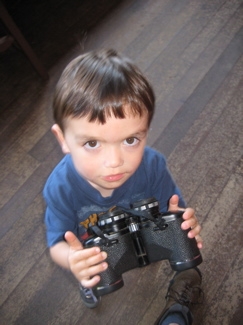
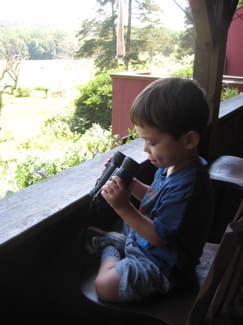
I don’t think I ever said the word “cute” before Damian.
Turns out that this is normal juvenile hawk behavior. The cry and cry for the first few weeks after leaving the nest. I took some pretty decent pictures of our hawk, and figure this is a good place to post one:
Juvenile hawks are also actually a little bigger than adults as they are full of extra feathers and fat to get them through their first year of being terrible hunters. At least that’s what they guy told me on the observation deck at the Bent.
Damian and I went back outside to check out the butterfly garden and the birdhouses. These and the other gardens were very nicely maintained and we had fun running around all the little stone walls and steps and sundials and things. Yes! Damian was happy to mobilize on his own!
Until, that is, it was time to hit the trail back out to the car. Oh well, we had fun
…………………………………………………….
Cost: $3.00 suggested donation
Hours: grounds dawn to dusk; museum business hours
Food & Drink? Maggie McFly’s is nearby and okay
Children? Mobile ones, yes
You’ll like it if: You don’t mind hiking to the museum
You won’t like it if: You drive to get your mail
Freebies: None
For the Curious:
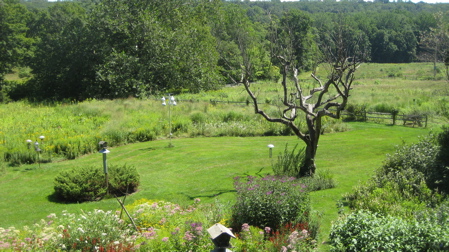
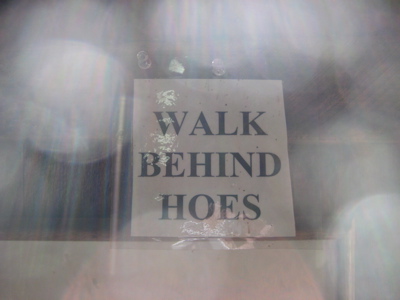
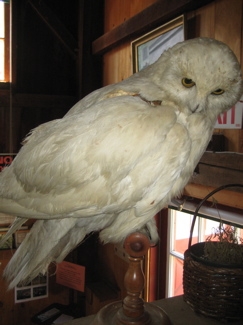
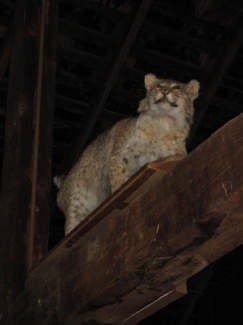
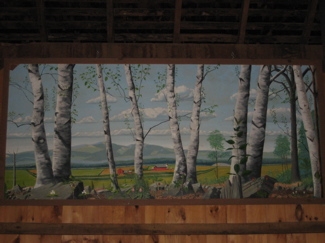
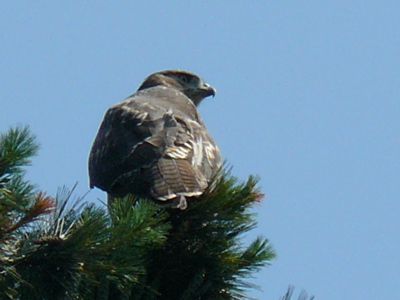
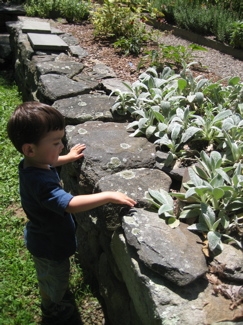
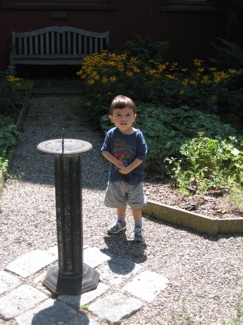
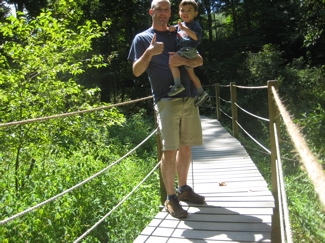
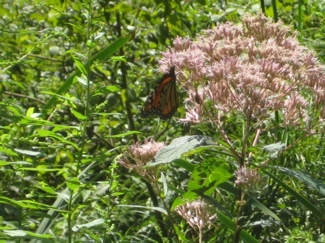






I just love Damian photos.
hb
Comment #1 on 12.31.09 at 3:50 pmGreat outdoor and Damian pictures – I’ll have to check this place out!
Comment #2 on 01.04.10 at 1:26 pm“(and before I started my new job)”
You have a job?
Comment #3 on 01.05.10 at 4:55 pmFun reading through the eyes of a child and
Comment #4 on 02.03.10 at 7:36 amhis father. Somewhat long I found but gave
some history i new nothing about so I feel
more educated now. I love walking the trail
by the river best and maybe xcountry skiing
soon there.